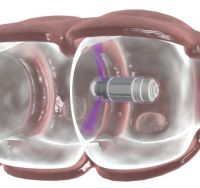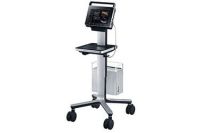New imaging techniques are fuelling an epidemic in diagnosis and treatment of thyroid cancers that are unlikely to ever progress to cause symptoms or death, warn experts writing in the British Medical Journal.
New technologies such as ultrasound, CT and MRI scanning can detect thyroid nodules as small as 2mm. Many of these small nodules are papillary thyroid cancers.
In the U.S., cases have tripled in the past 30 years - from 3.6 per 100,000 in 1973 to 11.6 per 100,000 in 2009 – making it one of the fastest growing diagnoses. Yet the death rate from papillary thyroid cancer has remained stable.
This expanding gap between incidence of thyroid cancer and deaths suggests that low risk cancers are being overdiagnosed and overtreated, argue Dr Juan Brito and colleagues at the Mayo Clinic in Minnesota.
This is exposing patients to unnecessary and harmful treatment that is inconsistent with their prognosis, they warn, and they say both the overdiagnosis and overtreatment of this form of cancer need to be fully recognised.
The authors say that unnecessary thyroidectomy (the surgical removal of all or part of the thyroid gland) is costly, and carries a risk of complications such as low calcium levels and nerve injury. In the U.S., the number of thyroidectomies for thyroid cancer has risen by 60% over the past 10 years at an estimated cost of $416m (£270m; €316m).
Using radioactive iodine in patients with low risk thyroid cancer has also increased from one in 300 patients to two in five patients between 1973 and 2006, despite recommendations against using it, they add.
They acknowledge that inferring overdiagnosis of thyroid cancer has limitations, but say that uncertainty about the benefits and harms of immediate treatment for low risk papillary thyroid cancer “should spur clinicians to engage patients in shared decision making … to ensure treatment is consistent with the research evidence and patient goals.”
They suggest a term that conveys favourable prognosis for low risk thyroid cancers (microPapillary Lesions of Indolent Course or microPLIC)) and makes it easier to give patients the choice of active surveillance over immediate and often intensive treatment. And they call for research to identify the appropriate care for these patients.
Source: BMJ
27 August 2013
References:
Juan P Brito, John C Morris, Victor M Monton. Thyroid cancer: zealous imaging has increased detection and treatment of low risk tumours. BMJ 2013;347:f4706.
Latest Articles
Cancer, Imaging, Thyroid
New imaging techniques are fuelling an epidemic in diagnosis and treatment of thyroid cancers that are unlikely to ever progress to cause symptoms or death...



























